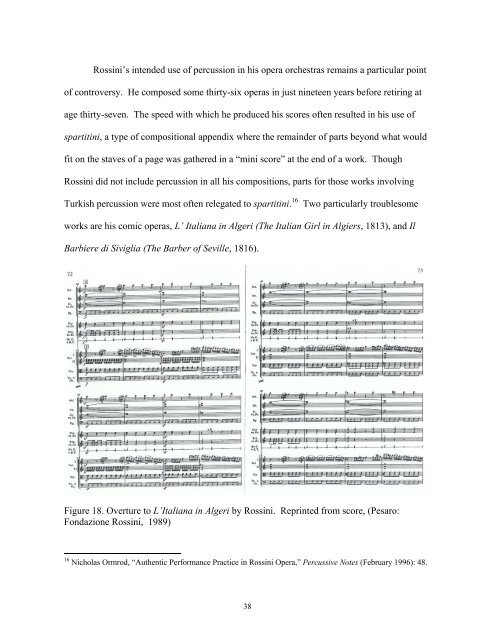THE ROLE OF TURKISH PERCUSSION IN THE HISTORY AND ...
THE ROLE OF TURKISH PERCUSSION IN THE HISTORY AND ...
THE ROLE OF TURKISH PERCUSSION IN THE HISTORY AND ...
You also want an ePaper? Increase the reach of your titles
YUMPU automatically turns print PDFs into web optimized ePapers that Google loves.
Rossini’s intended use of percussion in his opera orchestras remains a particular point<br />
of controversy. He composed some thirty-six operas in just nineteen years before retiring at<br />
age thirty-seven. The speed with which he produced his scores often resulted in his use of<br />
spartitini, a type of compositional appendix where the remainder of parts beyond what would<br />
fit on the staves of a page was gathered in a “mini score” at the end of a work. Though<br />
Rossini did not include percussion in all his compositions, parts for those works involving<br />
Turkish percussion were most often relegated to spartitini. 16 Two particularly troublesome<br />
works are his comic operas, L’ Italiana in Algeri (The Italian Girl in Algiers, 1813), and Il<br />
Barbiere di Siviglia (The Barber of Seville, 1816).<br />
Figure 18. Overture to L’Italiana in Algeri by Rossini. Reprinted from score, (Pesaro:<br />
Fondazione Rossini, 1989)<br />
16 Nicholas Ormrod, “Authentic Performance Practice in Rossini Opera,” Percussive Notes (February 1996): 48.<br />
38

















